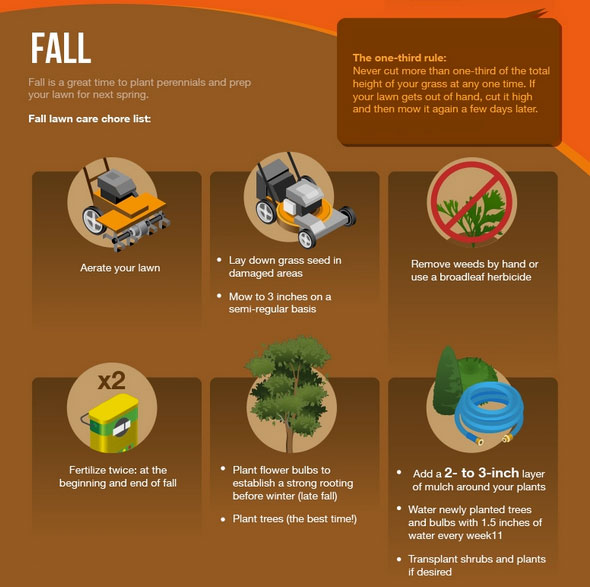SPOILER ALERT!
Understand Exactly How To Choose The Perfect Plants For Your Climate Zone And Find The Vital Variables That Make All The Difference In Successful Gardening
Created By-Day Alvarado
Choosing the right plants for your environment area is vital for an effective garden. By recognizing https://www.mauimagazine.net/great-outdoors/ and rains patterns, you can choose plants that will certainly flourish in your location. It's not just about aesthetic appeals; it's about selecting varieties that need less upkeep and can endure neighborhood conditions. So, just how do you recognize the very best options for your particular zone? Let's discover the essential factors to think about.
When you're selecting plants for your yard, comprehending climate areas is crucial, as it directly affects your plants' development and survival.
Climate areas classify areas based on temperature level, rainfall, and seasonal adjustments, aiding you recognize which plants flourish in your atmosphere.
You'll discover that each area has distinct characteristics, from frost days to humidity degrees, affecting plant choices.
For instance, tropical zones sustain lavish, heat-loving plants, while cooler areas require hardier selections that can endure frost.
By understanding your climate zone, you can select plants that not only endure but grow.
This expertise likewise overviews you in intending your yard design, guaranteeing your plants obtain the ideal problems to flourish.
Accept your area, and allow it form your gardening success!
Understanding your climate zone establishes the stage for selecting the right plants to develop a flourishing garden. Begin by researching plants that normally grow in your location's temperature level and rains patterns.
Look for indigenous species, as they're adjusted to neighborhood conditions and need less maintenance. Examine the USDA Plant Hardiness Zone Map to discover plants matched to your particular area.
Consider sun exposure, soil type, and wetness levels also. When shopping, take note of labels that show strength zones. This makes certain the plants you pick will make it through seasonal modifications and neighborhood insects.
To cultivate a thriving garden, you need to focus on a couple of crucial techniques that promote plant health and wellness and resilience.
First, guarantee you're sprinkling your plants constantly yet not overwatering; aim for deep, occasional watering to motivate strong origins.
Next, practice mulching to keep wetness and suppress weeds.
It's likewise necessary to feed properly, utilizing organic options when feasible, to offer your plants the nutrients they require without chemical accumulation.
Consistently check for insects and illness, and deal with any issues quickly to avoid further damages.
Lastly, turn cut above lawn care & landscaping to preserve soil health and protect against insect buildup.
Conclusion
By recognizing your climate zone and picking the right plants, you're establishing yourself up for horticulture success. Keep in mind to use resources like the USDA Plant Strength Area Map and focus on indigenous species that thrive in your area. Take notice of aspects like sunlight direct exposure, dirt kind, and moisture levels to guarantee your garden embellishments. With these ideas, you'll produce a vivid, durable yard that needs much less upkeep and brings joy for years ahead.

Choosing the right plants for your environment area is vital for an effective garden. By recognizing https://www.mauimagazine.net/great-outdoors/ and rains patterns, you can choose plants that will certainly flourish in your location. It's not just about aesthetic appeals; it's about selecting varieties that need less upkeep and can endure neighborhood conditions. So, just how do you recognize the very best options for your particular zone? Let's discover the essential factors to think about.
Comprehending Climate Zones
When you're selecting plants for your yard, comprehending climate areas is crucial, as it directly affects your plants' development and survival.
Climate areas classify areas based on temperature level, rainfall, and seasonal adjustments, aiding you recognize which plants flourish in your atmosphere.
You'll discover that each area has distinct characteristics, from frost days to humidity degrees, affecting plant choices.
For instance, tropical zones sustain lavish, heat-loving plants, while cooler areas require hardier selections that can endure frost.
By understanding your climate zone, you can select plants that not only endure but grow.
This expertise likewise overviews you in intending your yard design, guaranteeing your plants obtain the ideal problems to flourish.
Accept your area, and allow it form your gardening success!
Picking Plants for Your Climate
Understanding your climate zone establishes the stage for selecting the right plants to develop a flourishing garden. Begin by researching plants that normally grow in your location's temperature level and rains patterns.
Look for indigenous species, as they're adjusted to neighborhood conditions and need less maintenance. Examine the USDA Plant Hardiness Zone Map to discover plants matched to your particular area.
Consider sun exposure, soil type, and wetness levels also. When shopping, take note of labels that show strength zones. This makes certain the plants you pick will make it through seasonal modifications and neighborhood insects.
Tips for a Flourishing Garden
To cultivate a thriving garden, you need to focus on a couple of crucial techniques that promote plant health and wellness and resilience.
First, guarantee you're sprinkling your plants constantly yet not overwatering; aim for deep, occasional watering to motivate strong origins.
Next, practice mulching to keep wetness and suppress weeds.
It's likewise necessary to feed properly, utilizing organic options when feasible, to offer your plants the nutrients they require without chemical accumulation.
Consistently check for insects and illness, and deal with any issues quickly to avoid further damages.
Lastly, turn cut above lawn care & landscaping to preserve soil health and protect against insect buildup.
Conclusion
By recognizing your climate zone and picking the right plants, you're establishing yourself up for horticulture success. Keep in mind to use resources like the USDA Plant Strength Area Map and focus on indigenous species that thrive in your area. Take notice of aspects like sunlight direct exposure, dirt kind, and moisture levels to guarantee your garden embellishments. With these ideas, you'll produce a vivid, durable yard that needs much less upkeep and brings joy for years ahead.

